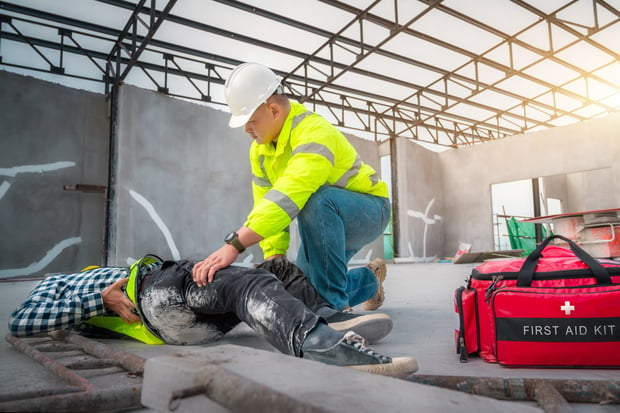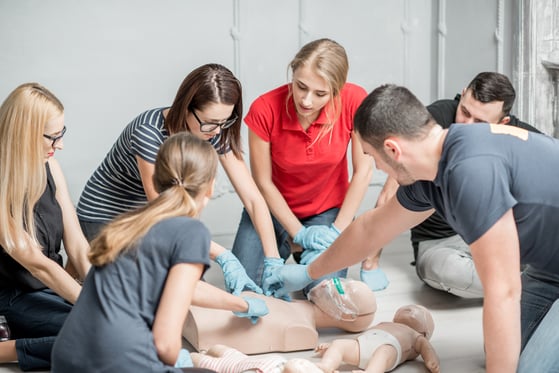In the ever-changing world of work environments, accidents can happen unexpectedly, even in the most meticulously controlled settings. With a wide range of activities taking place in the workplace, the potential for unforeseen incidents is always present. It is crucial to recognize the importance of being proactive, especially when it comes to dealing with minor injuries and emergencies.
Consider these tips as a valuable resource for effectively managing workplace incidents and injuries, while always considering the established protocols of your organization.
Know Your Environment and Resources
- Identify the location of the first-aid kit. Ensure your first-aid kit is readily accessible and well-stocked with essential supplies like bandages, antiseptic wipes, cold packs, emergency blankets, etc.
- Familiarize yourself with emergency contact information. Have numbers for local emergency services, ambulances, and poison control readily available.
- Consider workplace-specific risks. For example, if your work involves machinery, knowing wound cleaning and infection prevention is crucial.
Assessing the Situation
- Stay calm and assess the situation before taking action. Determine the nature and severity of the injury.
- Check for consciousness and breathing. If the person is unresponsive or not breathing, call emergency services immediately.
- Control any bleeding with direct pressure using a clean cloth or bandage.

Basic First Aid Techniques
- Minor cuts and scrapes: Clean the wound gently with soap and water, apply antiseptic wipes, and cover with a sterile bandage.
- Burns: Cool the burn immediately with cool running water for at least 20 minutes. Avoid breaking blisters or applying ointments.
- Sprains and strains: Apply ice packs to the area for 20 minutes at a time, elevate the affected limb, and provide support with a bandage or sling.
- Dizziness or fainting: Lay the person down with their legs elevated and loosen any restrictive clothing. Ensure a steady air supply and monitor their condition.
Communication and Documentation
- Inform a supervisor or colleagues about the incident and any actions taken.
- Encourage the injured person to seek medical attention if necessary.
- Document the incident and your actions for future reference.
- Adhere to your organization's established standard operating procedure for addressing workplace incidents and injuries.
Beyond the Basics
First-aid is meant to be a basic level of medical care in the event of some sort of accident, injury, or another type of similar emergency. However, first-aid by itself can become more effective when you push further beyond the basics. Here are some other things you can do to increase safety standards in the workplace:

- Consider attending basic first aid or CPR training to enhance your skills and confidence in handling emergencies.
- Encourage a culture of safety in the workplace. Promote awareness of potential hazards and responsible work practices.
- Regularly check and replenish the first-aid kit. Ensure essential supplies are available and in good condition.
Keep in mind that this guide serves informational purposes exclusively and should not be seen as a replacement for professional medical advice. If faced with a serious injury or uncertainty, it is imperative to promptly seek immediate medical attention.
By acquiring proficiency in fundamental first-aid techniques and ensuring access to a well-equipped first-aid kit, you can actively contribute to the creation and maintenance of a secure and health-conscious work environment. Stay prepared, maintain composure, and act confidently – you may be the decisive factor in someone's well-being.
To ensure a safe work environment and prevent workplace incidents, it is essential to take a proactive approach to safety management. One highly effective method is to incorporate EHS management software into your safety program. Safety management software can significantly enhance your ability to manage workplace health and safety, providing your organization with the necessary tools and resources to create a secure and health-conscious workplace. By implementing this EHS software, you can stay ahead of potential hazards and maintain a culture of safety within your organization.

